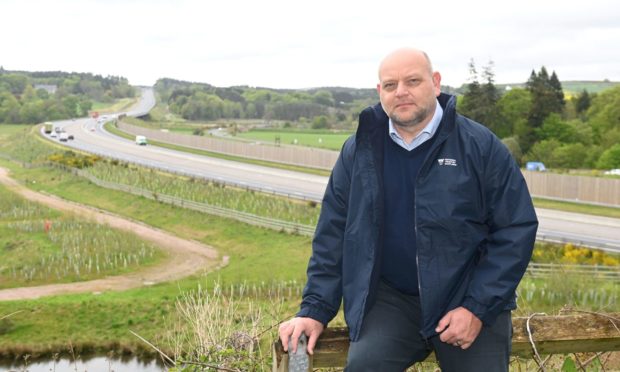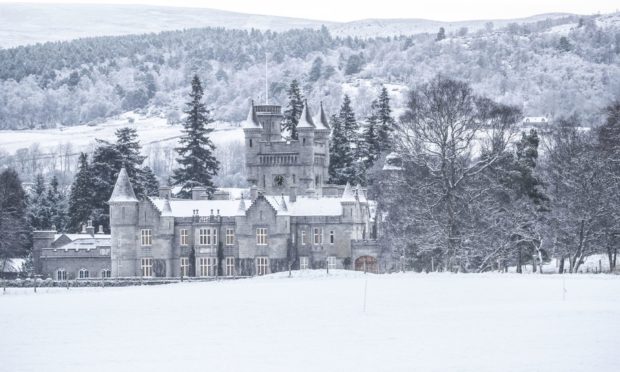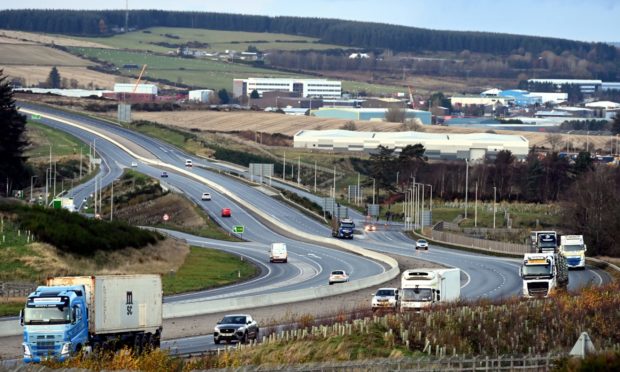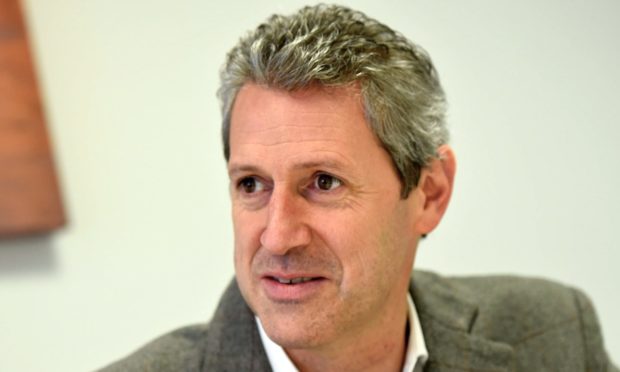Scotland’s roads quango has been accused of “passing the parcel” of the cost of helping north-east tourist attractions recover from the pandemic.
Industry bosses have pitched the idea of brown, tourism signs on the A90 Aberdeen bypass, pointing visitors in the direction of the area’s cultural highlights.
But Transport Scotland has said it would be for the tourist attractions to foot the bill, as they open up for business after their worst year trading in decades.
The absence was raised by the National Trust For Scotland.
Its many historic properties in Deeside and Donside could easily be accessed using the billion-pound Aberdeen Western Peripheral Route (AWPR) which stretches from Stonehaven to Blackdog.
The charity’s north-east general manager Iain Hawkins said: “The 28-mile AWPR has created a bypass of important city and Aberdeenshire places including Royal Deeside, art galleries, heritage properties such as Crathes Castle and Haddo House, multiple museums – all of which share a lack of profile or wayfinding for those travelling through our region.
“Brown tourist signage is simply critical: Dundee V&A would not consider operating within the city without clear directional brown signage and similarly Aberdeen city and shire should not consider this current position acceptable particularly when its tourism sector requires such crucial support.
“Take Royal Deeside for instance; the fact there is no signage highlighting the way to Balmoral – a really important site for Scotland – is just not good enough.
“I understand brown tourism signs are really expensive but it is really important too.
“I believe that AWPR signage is critical to supporting the bounce back of north-east attractions and would help to reignite our visitor economy.
“As we see the critical international trade come back again – as we will one day – we need to help ourselves.”
Mr Hawkins, who previously ran the tourist attractions of Blackpool pleasure beach, highlighted brown signs remained in parts of Aberdeen, but were yet to be put up on the new dual carriageway around the the city.
However, hopes of a helping hand from government towards the cost of the pricey posts were dashed when the Scottish roads body reiterated it would be for destinations to foot the bill.
A Transport Scotland spokesman said: “The onus is on the individual visitor attractions to apply for signage, where they meet the criteria set out in the relevant guidance, and approvals will be determined by the location of the proposed signage.
“The costs of the signage will be dictated by the size of the sign required and the tourist attraction would be expected to fund the cost.”
Mr Hawkins said the suggestion was “surprising” given the “suffering” endured by the tourism industry throughout the pandemic and called for ministers to look at introducing the signs as part of a “strategic economic approach”.
He added: “Passing the parcel of costs to the tourism operators does not seem to be a productive way to go about this.
“It is fair to say that some operators including charitable organisations such as the National Trust For Scotland would not be in a position to take this cost and to procure such signage.
“The completion of the AWPR without tourist directional signage is unacceptable and is not representative of all other towns and cities within the UK.”
Foundations of a local campaign to boost north-east ‘visitor economy’
The National Trust For Scotland is sounding out support for their calls – but has already won the backing of the north-east tourist board.
Visit Aberdeenshire chief executive Chris Foy said the signs could perhaps uncover hidden gems which would prompt visitors to come back to the area.
“We welcome consideration of any initiative that can help to reignite and sustain the visitor economy, and make it easier for visitors to discover the north-east,” he said.
“Even in an age of satnav and smart phones, the recognisable brown signs can be an effective way finder for many visitors, and can also prompt return visits to explore more attractions.”
And Aberdeen City Council – keen to highlight the recently-refurbished art gallery, ‘jewel in the crown’ beach and other attractions hoped to pull visitors off the fast track of the A90 – is also keen to take the idea to the Scottish Government.
But only if the initiative was to come for free.
Conservative leader on the council Ryan Houghton, who controls the purse strings as city growth convener, said: “Anything that supports tourism within Aberdeen and Aberdeenshire is something that the council welcomes.
“Alongside the National Trust For Scotland, we would be happy to lobby the Scottish Government – which controls the AWPR – to ensure appropriate road signage is put in place to highlight the many tourism attractions that are available throughout the north-east region.
“I am confident that should Transport Scotland agree to fund appropriate road signage, then the local authorities would quickly move to ensure these signs were put up in appropriate places to encourage tourists to visit the many worthwhile attractions that the north-east offers.”
As the huge bypass was being completed, Trump International complained about the Menie Estate golf course being “cut off” due to a lack of signs.
Brown signs highlighting the north coastal route, towards Newburgh and Cruden Bay on the A975, have been erected on the A90 Balmedie to Tipperty road, which built alongside the £1bn bypass.



